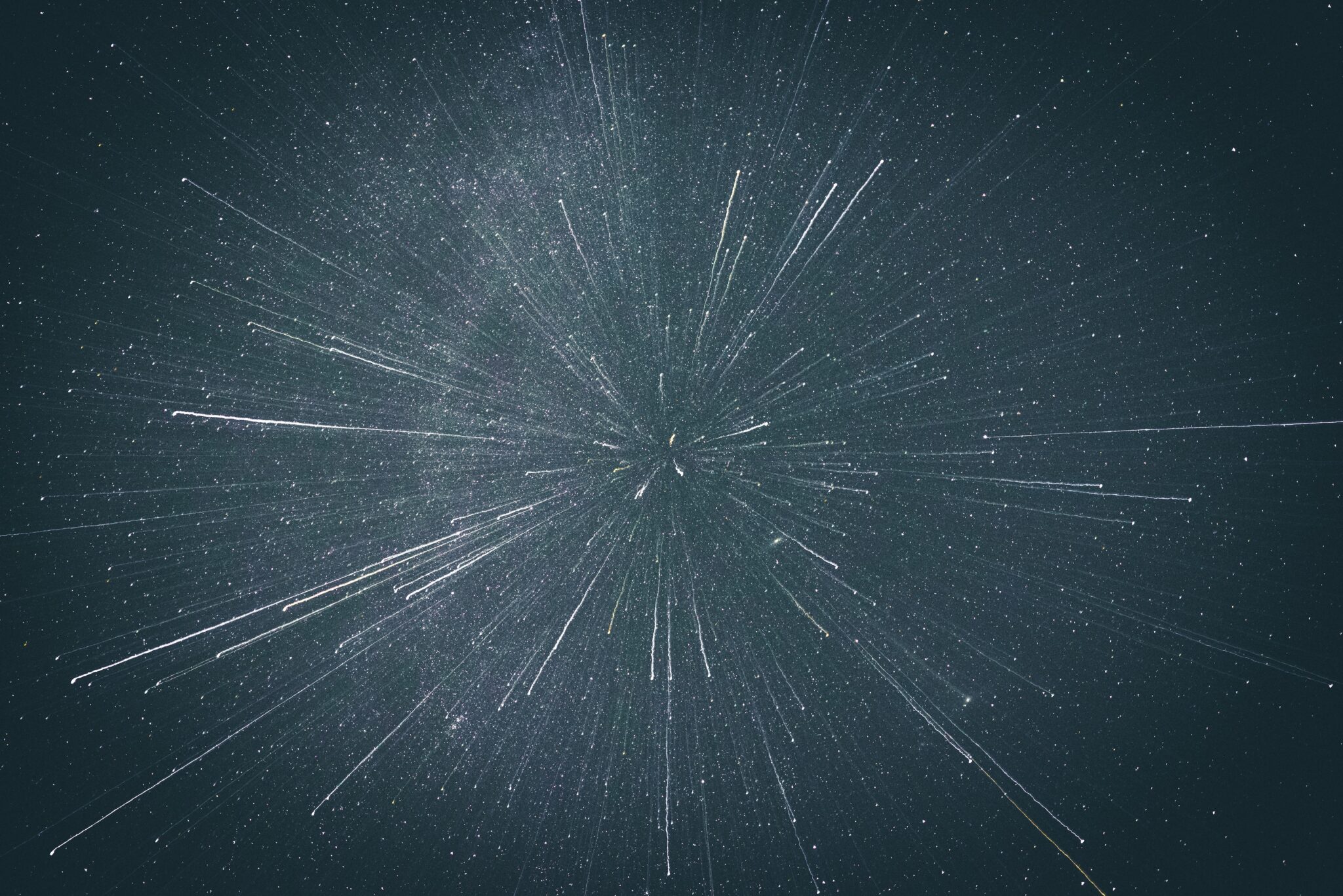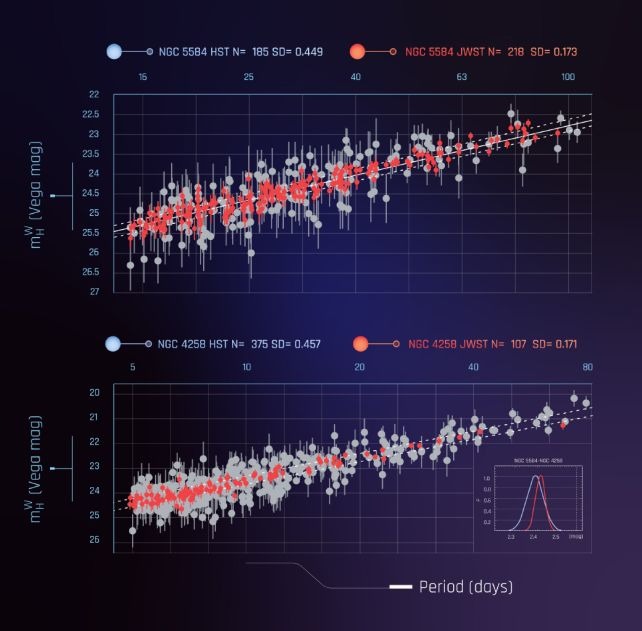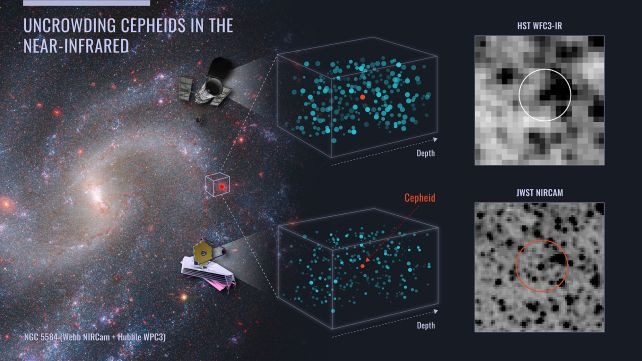New information about the rate of expansion of the Universe, obtained thanks to the James Webb Space Telescope, reveals new aspects in the greatest mystery of cosmology. These results confirm the previously obtained data from the Hubble Space Telescope, which greatly discouraged scientists in an attempt to unravel the main mystery of the Universe.

The discrepancy in the measurements known as “Hubble’s law” (from August 2018, the name “Hubble-Lemaitre law” is recommended) remains unchanged and calls into question our ability to accurately determine how fast our Universe is expanding. Despite the apparent constancy of the surrounding Universe, all objects in it are moving away from each other at an amazing rate, known as the Hubble constant, or H0. However, the exact value of H0 remains unknown, since different methods of measuring it give different results.
Great discrepancy between the two measurement results
One of the methods involves studying relic traces of the early Universe, such as the remnants of light in the cosmic microwave background or acoustic waves frozen in time. Another method is to measure distances to objects with known intrinsic brightness, such as Type Ia supernovae or Cepheid variable stars.
The first method usually indicates an expansion rate of about 67 km/s per megaparsec, while the second shows about 73 km/s per megaparsec. The discrepancy between these two methods is known as the “Hubble tension”.
The observations were carried out repeatedly, which minimizes the probability of error for each of the measurements. However, the possibility of systematic error remains in the future, especially considering the best data on cepheid variables that come from a single source, the Hubble Space Telescope.
Unlimited data
Astrophysicist Adam Riess of the Space Telescope Science Institute (STScI) and Johns Hopkins University notes that “Cepheid variables are the gold standard tool for the purpose of measuring the distances of galaxies a hundred million or more light years away, a crucial step to determine the Hubble constant”. However, due to the limitations of telescopes on Earth, it was difficult to distinguish them from their neighbors within the line of sight.
To solve this problem, the Hubble Space Telescope was created, which had the best resolution and could identify individual cepheid variables in galaxies 100 million light-years away and measure the time interval of their brightness changes.

However, Hubble had its limitations in the infrared range, where dust interfered with observations. In this regard, the James Webb Space Telescope (JWST) turned out to be more powerful, capable of operating in the infrared range and providing data without these limitations.
Astronomers, including Adam Riess’ team, have used JWST to measure distances to cepheids in galaxies. They collected data from 320 cepheids, significantly reducing the noise that was seen in Hubble observations.
Mystery remains unsolved
Despite errors in the data received from the Hubble Space Telescope, the James Webb data confirmed the measurements and allowed scientists to conclude that the H0 value, which is 73 km/s per megaparsec, remains valid. The mysterious “Hubble tension” cannot be explained by human error in this case.
However, the nature of this tension remains unrevealed, and one of the main hypotheses is the existence of dark energy, which is a fundamental force accelerating the expansion of the Universe, but still remains unsolved. With the new JWST data, we can only take a small step towards solving this mystery.

Adam Riess notes that James Webb has confirmed Hubble’s measurements, which suggests that systematic errors in cepheid photometry have little effect on current tension. This means that even more mysteries remain unsolved, and the mystery of the expansion of the Universe is only deepening.
Earlier we talked about what happened before the Big Bang.
According to sciencealert.com
Follow us on Twitter to get the most interesting space news in time
https://twitter.com/ust_magazine

